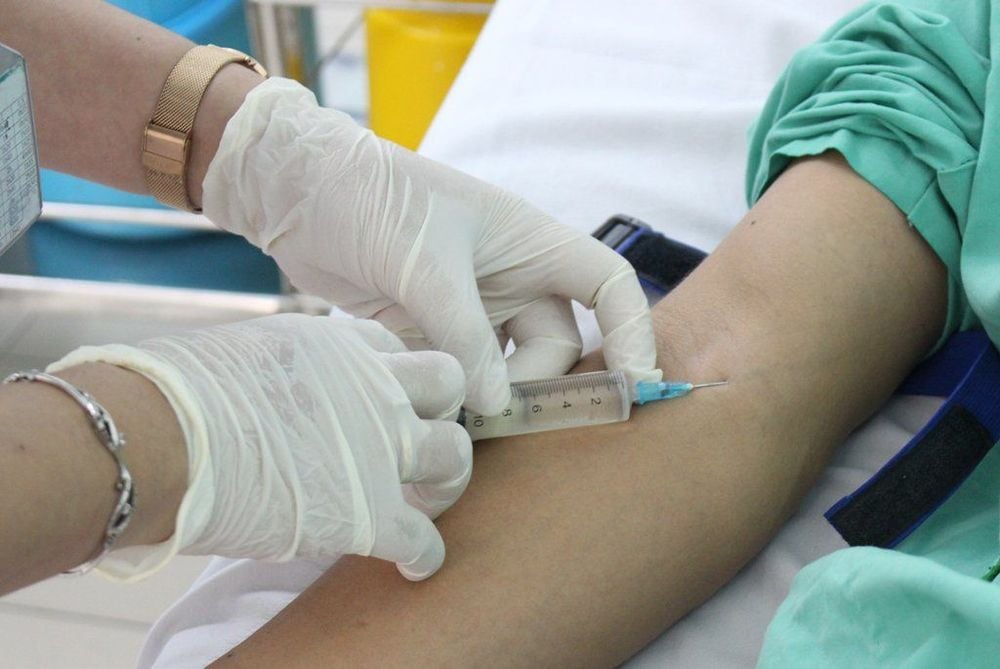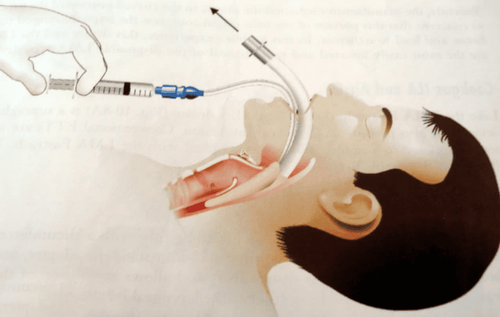This is an automatically translated article.
The article was professionally consulted by Specialist Doctor II Nguyen Binh - Department of General Surgery - Vinmec Ha Long International Hospital. Doctor Nguyen Binh has more than 20 years of experience in the field of anesthesia and resuscitation.Laryngeal mask anesthesia for laparoscopic thyroidectomy basedow is a general anesthetic technique with a laryngeal mask placed for the purpose of controlling breathing during surgery.
1. Basedow is what disease?
One form of endocrine disease, hyperthyroidism is considered the most common today is Graves disease (also known as Graves disease). More than 90% of cases of circulating hyperthyroidism have Basedow. The disease is characterized by diffuse goiter and the syndrome of uncontrolled hyperthyroidism (protrusion of the eye).The prevalence of Graves' disease is higher in women than in men, accounting for up to 80% of cases, usually between the ages of 20-50 and a family history of thyroid disease.
If the condition is prolonged, not properly treated, basedow's disease is very dangerous for the cardiovascular system, easily leading to complications of thyroid storm, causing the patient to die in heart failure.
2. Laparoscopic thyroidectomy basedow
One of the most common ways to treat thyroid disease is surgery. If traditional open surgery is done, there will be a horizontal incision in the crease in the neck. There is usually a faint scar on the neck if this procedure is performed. However, if the patient has a keloid scar, the scar will greatly affect the aesthetic face. Therefore, laparoscopic surgery is often chosen more because this is a minimally invasive surgical method with aesthetic advantages. Cases indicated to perform laparoscopic surgery, include: patients with multinodular goiter with 2 lobes, cases of hyperthyroidism, stable basedow and early stage thyroid cancer. The patient is removed one lobe or both lobes of the thyroid gland depending on the condition of the lesion.Here are some of the advantages of laparoscopic surgery:
It is a less invasive method Less cosmetic damage Faster patient recovery time Less pain. In order to control breathing during laparoscopic thyroidectomy for basedow therapy, laryngeal mask anesthesia should be performed. This is one of the important techniques in the surgical procedure.
3. Laryngeal mask anesthesia in laparoscopic thyroidectomy basedow
For the purpose of breathing control during laparoscopic thyroidectomy basedow treatment, the doctor will administer laryngeal mask anesthesia. This is a technique of general anesthesia with a laryngeal mask placed.3.1. Indications Only perform laryngeal mask anesthesia in laparoscopic thyroidectomy basedow treatment when: Difficult intubation, especially difficult ventilation or no ventilation
3.2. Contraindications Do not perform anesthesia with a laryngeal mask when the following conditions are present:
Patient's stomach is full. Anesthesia procedure Checking medical records Checking the patient's condition Performing the technique Put the patient on his back and at least 5 minutes before induction of anesthesia, give 100% oxygen Install a monitor Initiate anesthesia : Sleeping pills: intravenous anesthetics (propofol, etomidat, ketamine...), - Pain relievers: fentanyl, sufentanil,... Place a laryngeal mask on the condition that the patient sleeps deeply enough for anesthesia. The patient's head should be placed in the intermediate or slightly supine position. Use the index finger to place the junction between the laryngeal mask and the tube, with one hand opening the patient's mouth and the other hand bringing the laryngeal mask through the dental arches. At the base of the tongue, the back of the larynx needs to be pressed against the hard palate, in order for the mask to fit into the hypopharynx area, it is necessary to slide along the hard palate. When encountering resistance, stop Based on the instructions on the laryngeal mask to inflate the cuff to the correct volume. The larynx mask should be checked for tightness. Through auscultation and EtCo2 results, check the correct position of the laryngeal mask. Use adhesive tape to fix Use intravenous anesthetic or volatile anesthetic to maintain anesthesia, use pain relievers. Use a machine to control breathing.

Hemodynamic disturbances: Arrhythmia, blood pressure rise or fall Based on symptoms and causes to give directions for treatment. Placing a laryngeal mask causes complications: laryngeal mask cannot be placed. Laryngeal - bronchospasm Need adequate oxygen supply, use more sleeping pills and muscle relaxants Applying the procedure of endotracheal intubation is difficult if respiratory failure Based on the damage to give the direction of treatment. Respiratory complications: The laryngeal mask is folded, slipped, or the respiratory system is broken, the oxygen source is exhausted, the hypoxia and anthrax due to the soda has expired. provide 100%, identify the cause and solve. Withdrawal of the laryngeal mask causes complications: There are many causes leading to respiratory failure Patients with sore throat, hoarseness Voice - gas - bronchial spasms Inflammation of the upper respiratory tract Based on symptoms and causes to give appropriate treatment.
Please dial HOTLINE for more information or register for an appointment HERE. Download MyVinmec app to make appointments faster and to manage your bookings easily.














